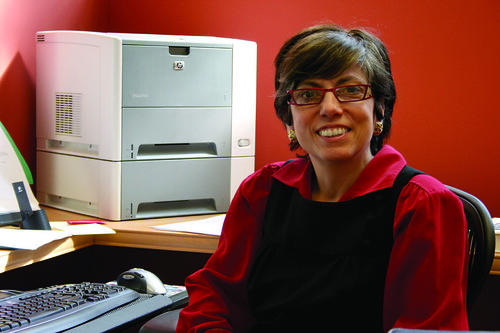The Academic Strategic Compass aims to make Temple a “destination campus” in the next five years.
Provost Lisa Staiano-Coico is the central force behind Temple’s Academic Strategic Compass, an approach at making Temple a “destination campus” in a five-year span.
Staiano-Coico came to Temple in July 2002, when she was asked by the president to help lead a faculty-based, consensus-driven approach to strategic planning and priorities for the campus’ future.

After an 18-month planning process involving a myriad of faculty members and some student input, the Academic Compass debuted in April 2009.
The compass contains four main points: opportunities for success, global commitment, research excellence and metro-engagement.
Approaching its one-year anniversary, the Compass and its initiatives remain as determined as when they were created. However, being a “flexible navigational tool,” the Compass is constantly changing, Staiano-Coico said.
Since Compass began, many initiatives have been implemented.
Under the Opportunities for Success category, the six-year graduation rate increased from 59 percent to 66 percent, the new Gen-Ed curriculum was launched and more advisers have been hired.
Staiano-Coico told other success stories as well, including those of an increased Honors Program that allows incoming honors students the option of four-year guaranteed housing, more study abroad opportunities and a new Japanese language program being offered at the Temple Japan campus.
Included in the Research Excellence point in the Compass, Staiano-Coico estimated close to $2 million dollars awarded in seed grants. These grants are given out in pilot awards of $50,000 each for research that must be “interdisciplinary and collaborative among faculty.”
A notable result of one of these seed grants is Temple’s production of SHOT! by Assistant Professor Kimmika Williams–Witherspoon, which will be performed in Washington, D.C.
She explained her affinity for student artwork and her attempt at making it a part of the university permanently.
The Provost’s Art Collection allows Staiano-Coico to purchase selected art done by students as a part of the collection for years to come.
“The arts are really very important to us and we have amazing art students,” Staiano-Coico said. “[The art] will become a part of the permanent collection that will be our student’s work.”
Staiano-Coico described the Metro-Engagement point as being about “partnership, us learning from our community neighbors to develop strong relationships … going beyond the classroom.”
While the ultimate goal and central focus of the Compass remains the same, changes in how to bring positive outcomes will be changing constantly.
“Each year you’re going to see major changes because the faculty participation and engagement with the compass is huge,” Senior Vice Provost and Dean of Students Betsy Tutelman said.
Aside from improving the educational atmosphere of the university, the plan has also been the basis for a proposed physical facelift to the university.
“With the Compass in place, we also understand that you need a physical environment that matches and meets the educational needs of students, so the 20/20 plan is built on the compass,” Staiano-Coico said.
The 20/20 framework plan proposes a 21st-century library also known as the signature building, a new research building, a new residence hall with a dining facility, more green space for students and the enhancing of Pearson and McGonigle halls to increase recreational space.
The plan will be funded by state grants, university borrowed money, university reserves, and through philanthropy or gifts, Senior Vice President of Finance and Administration for Temple Anthony Wagner said.
According to University Communications, Temple’s Board of Trustees authorized the securing of $175 million March 2 for the new residence hall with a dining hall, retail space and a parking facility. This hall is to be situated on the corner of Cecil B. Moore Avenue and North Broad Street, the location of the recently demolished University Services Building.
Wagner said that although the university cannot use state grants for the construction of residence halls; the borrowed money will be paid back through room rates.
Apart from the approval of the new residence hall, other proposed ideas in the 20/20 plan have yet to become official.
“While they [the Board of Trustees] endorse the plan and its vision, they approve each building one by one,” Wagner said.
Wagner added the next order of business for the plan would be the proposed signature building, which he said would be more cost effective than to enhance Paley Library.
By proposing the 21st-century library/signature building, Wagner explained, “it would bring a lot more activity to Broad Street.”
This proposed building, to be located where Parking Area No. 1 currently resides, is expected to be the new center point of Main Campus.
“It’s really a play on words,” said Wagner regarding the name 20/20, explaining not only its message as a clear vision for Temple but as having an expected completion in the next decade.
“We want to make Temple a destination for all you as students who come here, our alum, members of the community, our faculty, and our staff,” said Staiano-Coico.
Staiano-Coico emphasized student involvement with the Compass. Although there are not any specific students formally involved currently, Temple Student Government meets with the provost several times a semester to put its ideas forward.
The provost went on to encourage students to leave suggestions in the anonymous suggestion box located through the provost’s Compass website.
“The more that we can get student involvement and participation, the better we are,” Staiano-Coico said.
Angelo Fichera can be reached at afichera@temple.edu.



Be the first to comment